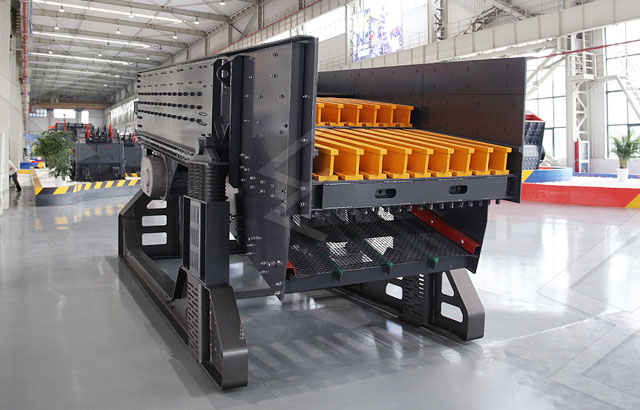A vibrating feeder is a piece of industrial equipment commonly used to transport bulk materials from one stage of a process to another. Its primary function is to feed material into crushers, sieves, conveyors, or any other machinery that requires consistent input. Vibrating feeders are known for their efficiency in controlling the flow of materials and ensuring a smooth and controlled process.

Design and Components
Vibrating feeders generally consist of a vibrating mechanism, a trough or pan, and a control system.
- Vibrating mechanism: This is the heart of the feeder and creates the necessary vibration to move the material. It’s usually powered by an electric motor or an electromagnetic drive. The vibrations cause the material to hop along the trough in small increments, moving steadily forward.
- Trough or Pan: This is where the material sits. The trough is generally made of a durable material like stainless steel or carbon steel, designed to withstand the abrasive and harsh environments in which vibrating feeders are often used. The size and shape of the trough can vary based on the specific application, allowing for customization.
- Control System: Most vibrating feeders come with adjustable controls that allow users to vary the speed and amplitude of the vibration, ensuring a steady and controlled material flow. This is essential for applications where precision is crucial, such as in manufacturing or chemical processing.
Working Principle
Vibrating feeders operate using the principle of mechanical vibration. When the vibrating mechanism is activated, the trough vibrates. These vibrations create small impulses that push the material forward in a linear motion. The speed and intensity of the material movement depend on the frequency and amplitude of the vibrations. The feeders are often used to regulate the flow of bulk materials into a process, ensuring an even and consistent delivery rate.
Specifications – Technical Data
| Model | Feed Chute Size W×L(mm) |
Obliquity(°) | Bar Length (mm) |
Maximum Feed Size (mm) |
Speed (r/min) |
Capacity (t/h) |
Power (kw) |
Matched Jaw Crusher |
| F5X1036H | 1000×3600 | 8 (0-15) | 2×900 | 600 | 650-900 | 350 | 15 | HJ98/HJ110/ PEW760/PEW860/ PE600×900/ PE750×1060/ PE900×1200/ PFW1214Ⅱ/ PFW1315Ⅱ/ PFW1318Ⅱ |
| F5X1245H | 1200×4500 | 2×900 | 700 | 600 | 22 | HJ110/ PE900×1200/ PFW1318Ⅱ/ HJ125/PEW1100/ PE1100×1200/ PFW1415Ⅱ |
||
| F5X1260H | 1200×6000 | 3×900 | 700 | 600 | 22 | HJ125/ PE1000×1200/ PEW1100/PFW1415Ⅱ |
||
| F5X1560H | 1500×6000 | 3×900 | 900 | 900 | 30 | C6X140/ PE1200×1500 |
||
| F5X1860H | 1800×6000 | 3×900 | 1100 | 1200 | 37 | C6X160/ PE1500×1800 |
||
| F5X2160H | 2100×6000 | 3×900 | 1300 | 1600 | 45 | C6X200 |
Notice:
1. Any change of European Type Jaw Crusher technical data shall not be advised additionally.
